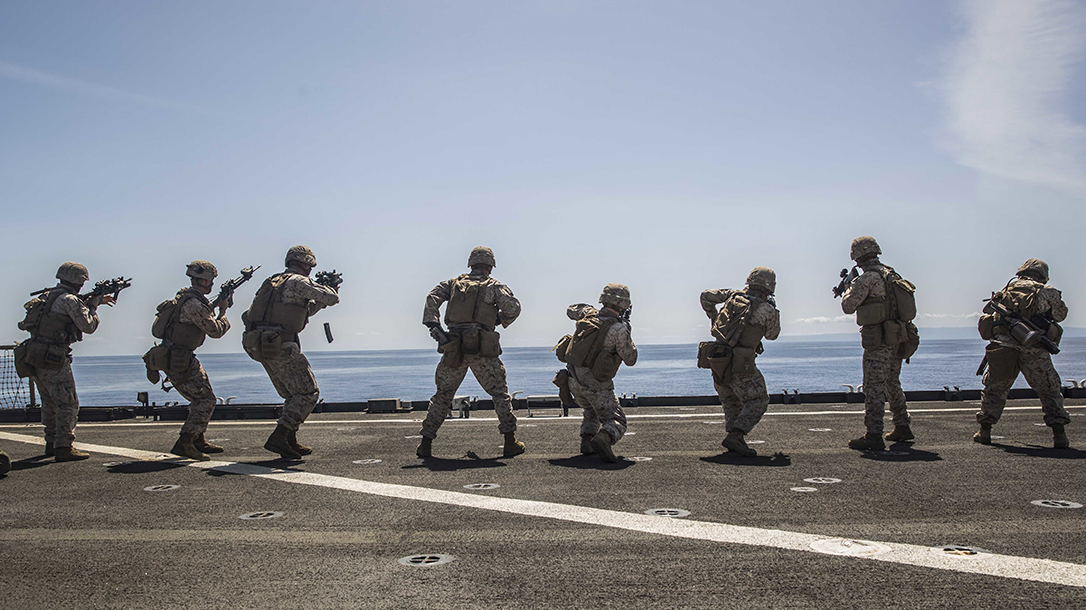We’ve all heard the horrific sound. You’re sighted in on the target. Your breath is right. You take that slow, steady squeeze of the trigger. “Click.” The AR-15 remains otherwise still and silent. “Oh no,” you panic. In a serious situation, what you do next can mean the difference between life and death.
The U.S. Marine Corps defines eight separate steps during the cycle of operations of the M16 service rifle. These same steps apply to the civilian-legal AR-15 as well. The cycle of operation includes feeding, chambering, locking, firing, unlocking, extracting, ejecting and cocking.
Advertisement — Continue Reading Below
The unintentional interruption of this cycle of operation results in a stoppage. On the range, a stoppage is annoying. In a match, it’s costly. But in a defensive, duty or combat situation, a stoppage can be fatal. The remedy to this occurrence, which will absolutely happen to every rifleman at some point, requires performing Immediate Action.
Performing Immediate Action
Immediate Action is defined as “the unhesitating response to clear a stoppage without investigating the cause. This is all about getting that rifle back into the fight, immediately. In Marine Corps parlance, Immediate Action is executed by performing Tap, Rack, Bang.
Step one is Tap, where the shooter takes the offhand and firmly strikes the bottom of the magazine. The goal here is to effectively re-seat the mag, a common cause of stoppages.
Advertisement — Continue Reading Below
During Rack, the shooter pulls back on the charging handle. The key is to pull it fully to the rear, then release and allow the bolt to return home under spring tension.
Finally, during Bang, the shooter sights in and attempts to fire. Often replaced with “Target” in civilian circles, because safety is paramount, the final step assumes seating the mag and clearing the jammed round fixes the problem.
You can practice Immediate Action during dry fire sessions at home. Better still, blindly place dummy rounds somewhere within your magazine, mixed with live rounds. Then in a safe, controlled setting, fire at a target until the dummy round gives you the dreaded “click.” You’ll be forced to perform Immediate Action to get the rifle back running again. Incorporate an Immediate Action Drill into your training session to ensure you can immediately fix your problem under duress.
Advertisement — Continue Reading Below
When Immediate Action doesn’t clear the stoppage, Marines move on to Remedial Action, a more investigative process that identifies the problem at hand.
























